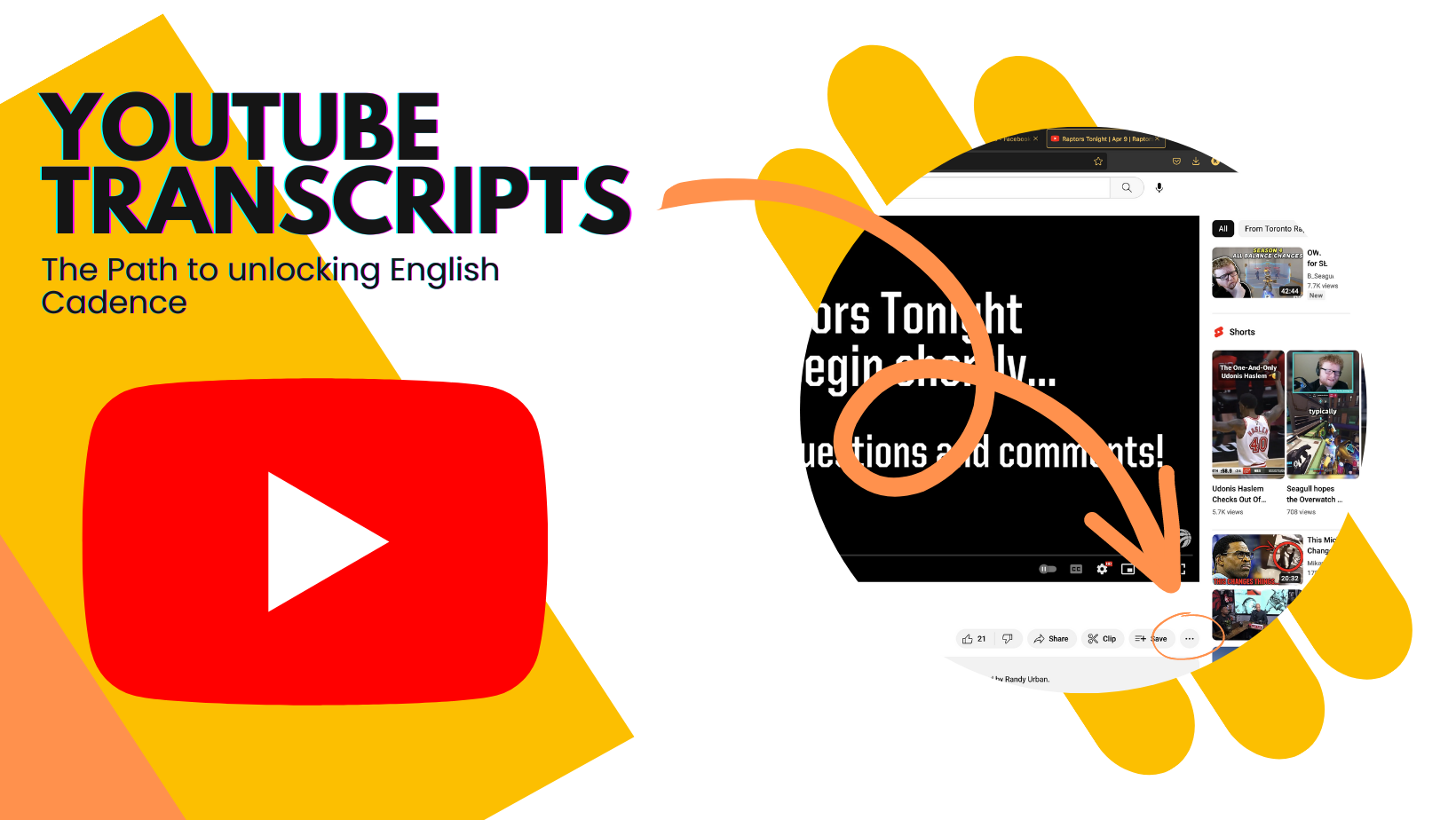YouTube Transcripts - The Path to unlocking English Cadence
One of the most deliberate things you can do to practice your English language communication is to intentionally work on your English language cadence.
It’s not an area of focus that people deliberately practice but I think it is immensely important in garnering an understanding of English rhythm.
Additionally there are idiosyncratic variations and turn of phrases (a particular or characteristic manner of expression) that are unique to an individual.
The way that someone explains themselves, organizes their thoughts into a sequence of utterances, their decisions on stressed words, their metaphor or idiom choice is all unique to them.
And if you like the way they explain something, or like the way they speak, their deliberate pauses, their deliberate moments to catch their breath, the rate of their speech, and so forth, it becomes an extremely important thing to learn how to do that more intentionally.
It becomes a decision or practice of pattern recognition and habit forming.
When you say the phrase GOOD MORNING, are you saying GOOOOOOD morning or good MOORRRNing or good mornIIIIINNNNGGG? Or do you just say good morning.
And why? What influenced that choice. If you are excited, do you say it the same way as when you are tired, when you are sad, when you are angry, when you are sarcastic, and when you are afraid?
Why do you choose one over the other?
Is that something you think about?
Consider the following video.
Although the words are all there, the writing does not capture the cadence, the rhythm, the pauses, the places to breathe, the intonation variance and all of that impacts your rhythm, your English pronunciation, your stress and ultimately can impact your credibility, your confidence, your command of attention, and captivation.
Personalizing Your English Cadence
And so what you can do, is choose your favourite English speaking YouTuber.
Whether that’s a big tech reviewer like MKBHD, Unbox Therapy, or maybe it’s a Vlogger like Casey Neistat, they can be an invaluable resource for intentional practice.
💡 The one caveat that I’d suggest though is to pick a non-announcer/TV talking head because they communicate for television, not for typical conversation.
By using transcript generators on YouTube, you can quickly generate a script for the YouTube video. Print it out and begin to edit and draw over it to capture the rhythm and cadence that isn’t present in the words.
Notice where there is a pause
Notice where words are grouped together
Notice which words are said louder, longer, or more high pitched
Notice where words are higher or lower in pitch
Write it all down. Capture it all on a piece of paper.
And then practice mimicking your model. Try to say it with the exact same cadence as your model. By doing so intentionally, it will bring to your attention, things about communicating in English that you haven’t paid attention to. It will make you question decisions made by your model. Why did they choose to express it THIS way.
And I think ultimately, that will bring to your attention, subtle communication techniques that they use subconsciously that perhaps you aren’t doing.
For example, for the phrase “I CAN DO IT”, I would never stress the word CAN in this situation because I would only stress it for the phrase I CANT DO IT. This would only confuse a listener because
And begin practicing it. Practice sentence by sentence. Practice until your pacing is exactly the same.
Then, practice at the paragraph level. Try to say the entire paragraph with the same cadence.
There are general frameworks and patterns you will notice.
Function words (grammar words) will typically be brief or shortened
One or two content words will be stressed
Utterances will vary in lengthy. Some will be quick and short while others might be long. It’s the variation.
Some words will be grouped together and said quickly. They may be short phrases, compound words, or typically grouped together like ‘For◡example’, ‘I◡wonder◡if’, ‘I◡don’t◡know’. Some of these grouped together words are said so regularly and commonly that they start to shorten even more like ‘I dunno’.
Don’t underestimate the amount of time needed for a diligently completed job. It will take you a while. The good news though is by practicing this strategy, you learn skills and techniques that can be applied in everyday speech - not just the one YouTube video you just practiced.


